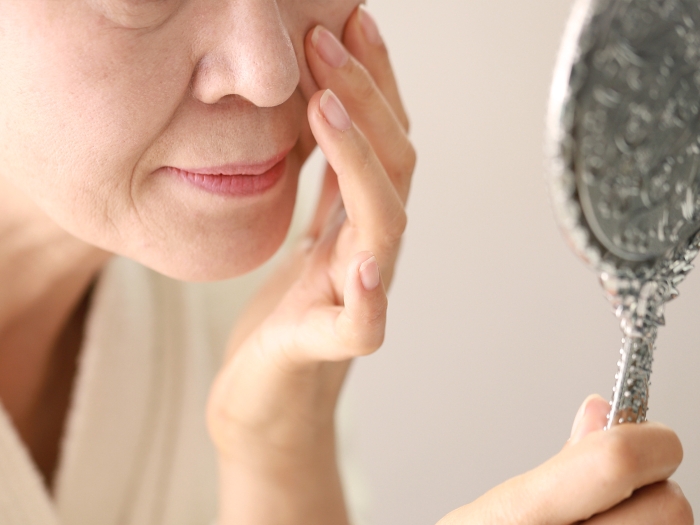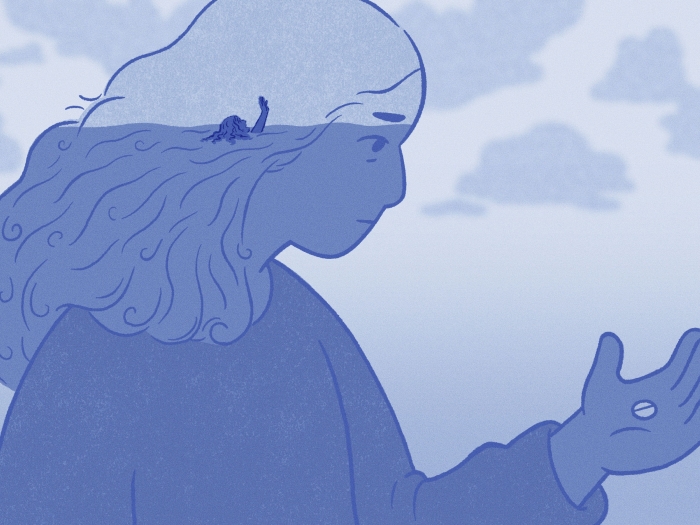Frequent moves, long separations and the sense that civilians don’t understand all add stress for those who serve their country
11:38 AM
Author |
There are over 20 million military veterans in the United States, with 650,000 in Michigan alone. How can we deepen our understanding of our service members, veterans and their families?
Here are some insights from veterans and advice from Michigan Medicine's experts:
Understand the sacrifices vets and their families make.
Adam Jando, Army National Guard veteran, describes how his first combat deployment to Afghanistan took him "from feeling like I was 21 to 40."
Not only does military service tend to age people at a faster rate, it also "changes you to your core," says Jennifer Lamb, a Marine Corps veteran who lives in Ann Arbor, Mich..
In addition to service members experiencing significant wear and tear on their bodies and a profound shift in identity, the toll that their service can take on their personal lives brings a whole new set of challenges.
When Jando, who is from Saline, Mich., returned home from one of his deployments, he experienced one of the most shocking experiences during his time serving: his young daughter not only didn't recognize him, but was afraid of him.
Other common stressors include the upheaval of frequent moves, the difficulties of long and frequent separations, and the sense that civilians don't understand them or relate to the challenges they face.
MORE FROM MICHIGAN: Sign up for our weekly newsletter
But there are resources and programs available to veterans and their families that can help address the challenges these stressors bring. These programs can help equip them with the skills they need to better cope with the unique stressors of military life as well as connect participants with other veterans in their communities, which serves to decrease feelings of isolation felt by some. Michigan Medicine offers five programs like this through their Depression Center's Military Support Programs and Networks (M-SPAN).
Reshape your idea of what a veteran looks like.
Most people picture a male, and many think of someone who's fought in combat. But females now comprise a growing segment of the active duty and Selected Reserve forces, at over 16% and 19% respectively, according to the Department of Defense's 2017 Demographics Report. Subsequently, the percentage of women veterans will continue to grow.
And among the living veteran population, only 35% of men and 15% of women served in combat, the Pew Research Center reports. But not seeing combat doesn't mean that these veterans haven't served or performed roles vital to the security of the country.
Rethinking how veterans look is important because it'll provide a broader understanding of how diverse they are, both in terms of demographics and their multitude of experiences while serving, which can help more people better understand and respond to their needs.
Michigan Medicine has developed an innovative program called After Her Service, an evidence-based intervention tailored for women veterans. So far, 50 women veterans from across the country have participated in this resiliency skills and career coaching program with promising results.
"It provided a safe outlet, trained professionals to address sticky issues, laughter, laser-focused and specific women veteran issues and an opportunity for the development of lifelong friendships," said one of its participants.
Recruitment is currently underway, and the program plans to deliver its services to 90 more women veterans over the next year.
Appreciate the sometimes long and complicated transition out of the military.
"When you go into the military, they take six, 10, 12 weeks to train you how to operate in that milieu. You don't get that same amount of training when you get out," says veteran and After Her Service participant Suzanna Friedly, of Marshall, Mich.
For some, the transition out of deployments can be just as hard as the deployment: "War is hell. Coming back isn't much better," says Army veteran Fred Honerkamp, who saw intense combat during his time serving in Vietnam in the late '60s.
LISTEN UP: Add the new Michigan Medicine News Break to your Alexa-enabled device, or subscribe to our daily updates on iTunes, Google Play and Stitcher.
Honerkamp's searing memory of the difficulties adjusting to civilian life after his time in Vietnam spurred him to spend decades volunteering for veteran-serving organizations. The Midland, Mich. resident is now a Volunteer Veteran for the Buddy-to-Buddy program, which uses trained volunteers to provide outreach, peer support and resources to service members and veterans.
"We're seeing with this generation of veterans, a true commitment to continuing to give," says Michelle Kees, Ph.D., a clinical psychologist in the Department of Psychiatry at Michigan Medicine. Kees is also the lead principal investigator for M-SPAN.
Programs like Buddy-to-Buddy and its sister program, Peer Advisors for Veteran Education (PAVE), offer effective means for veterans to help ease the challenges some of their fellow veterans experience as they transition out of the military.
"The power of peers cannot be overstated," says Marine Corps veteran Tim Nellett, who is the program manager for PAVE and has directly experienced the effectiveness of peer support.
Learn about organizations in the community that offer active support to vets.
At Michigan Medicine, military and veteran programs within the Depression Center serve the military and veteran population throughout Michigan and the country. They're also joined by other quality organizations, many who actively partner with them to enhance and expand their overall reach. These include organizations like Student Veterans of America, The Mission Continues, Veterans of Foreign Wars, Disabled Veterans of America, and the American Legion, as well as foundations and agencies who've funded this type of work for years.

Explore a variety of healthcare news & stories by visiting the Health Lab home page for more articles.

Department of Communication at Michigan Medicine
Want top health & research news weekly? Sign up for Health Lab’s newsletters today!





